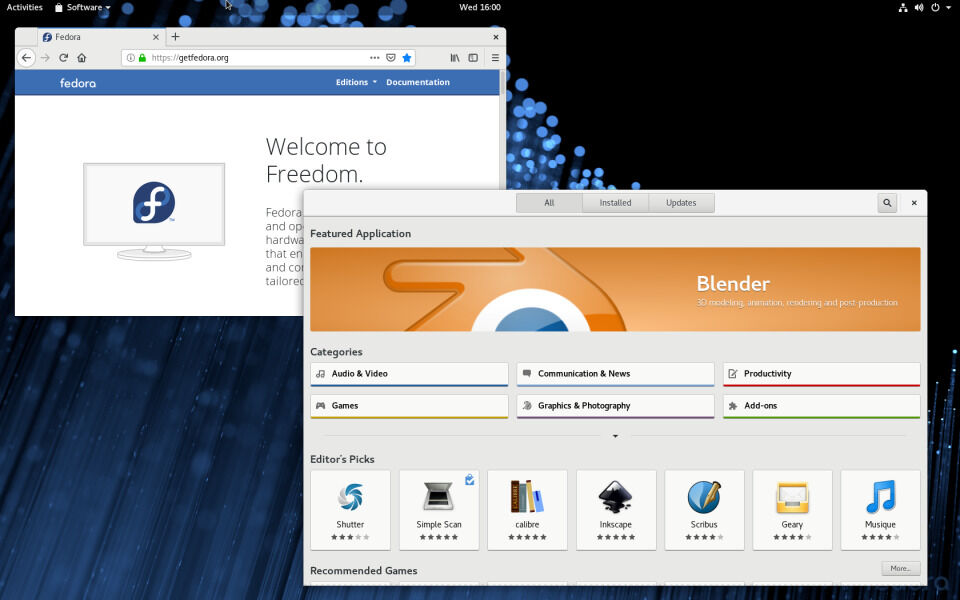With the recent release of Fedora 30, Fedora 28 officially enters End Of Life (EOL) status effective May 28, 2019. This impacts any systems still on Fedora 28. If you’re not sure what that means to you, read more below.
At this point, packages in the Fedora 28 repositories no longer receive security, bugfix, or enhancement updates. Furthermore, the community adds no new packages to the Fedora 28 collection starting at End of Life. Essentially, the Fedora 28 release will not change again, meaning users no longer receive the normal benefits of this leading-edge operating system.
There’s an easy, free way to keep those benefits. If you’re still running an End of Life version such as Fedora 28, now is the perfect time to upgrade to Fedora 29 or to Fedora 30. Upgrading gives you access to all the community-provided software in Fedora.
Looking back at Fedora 28
Fedora 28 was released on May 1, 2018. As part of their commitment to users, Fedora community members released over 9,700 updates.
This release featured, among many other improvements and upgrades:
- GNOME 3.28
- Easier options for third-party repositories
- Automatic updates for the Fedora Atomic Host
- The new Modular repository, allowing you to select from different versions of software for your system

Of course, the Project also offered numerous alternative spins of Fedora, and support for multiple architectures.
About the Fedora release cycle
The Fedora Project offers updates for a Fedora release until a month after the second subsequent version releases. For example, updates for Fedora 29 continue until one month after the release of Fedora 31. Fedora 30 continues to be supported up until one month after the release of Fedora 32.
The Fedora Project wiki contains more detailed information about the entire Fedora Release Life Cycle. The lifecycle includes milestones from development to release, and the post-release support period.






David
I really hope that the update will be smooth when it’s a customized 28 server since I succeed to run it very stable since months now… 🙂
Leslie Satenstein
Just to nitpick. End of life means dead–stop functioning
End-of-support would be a better notice.
Sorry Fedoracans , myself included, Time to move to the Fedora 30 — a fantastic release.
Paul W. Frields
Not really; it’s the accepted terminology: https://en.wikipedia.org/wiki/End-of-life_(product)
Adam
Desktop picture is from Fedora 27, Fix this to make it from Fedora 28
Paul W. Frields
Fixed. 🙂
Roy
Hi Paul, I am grateful for you make up this great O. S. (I am not an English speaker, so I apologize for the grammar mistakes). I began using Fedora 14, and I am keeping upgrading every time as a new release appears.
Now, I use Fedora 30, but I’ve got some problems with my Broadcom wifi interface. It fails every connection intent at the systems’ start, and takes about 15 – 30 minutes to get the connection. Even though I make a “dnf update” every day, there is no solution yet. Please review this issue. Thanks a lot.
topyli
Fedora 28 fans can now migrate to RHEL 8 🙂
max
Just upgraded 2 weeks ago from 28 to 30, all went smooth, except for Wayland refusing to start (when it was working fine on 28). Had to add WaylandEnable=false to /etc/gdm/custom.conf to get back to X as it wouldn’t even bring up the login screen. Solid release otherwise, thanks!
Moses M
@max.
Did you go directly from 28 to 30 or did you upgrade to 29 before 30 ?
Thanks
max
@Moses M
I went directly from 28 to 30, such a jump seems to be officially supported.
Cheers
Nikos Gkikas
Just a newbie question guys…
If i upgrade to 30, what is going to happen with all my libraries etc. installed?
Will they be lost and should i install them again?
VSE NN
If you upgrade via recommended way, then all installed packages should be upgraded to the versions, that are current in the release you upgrade to, that means that new versions are to be installed and then old versions are to be removed. It is so when you use only official fedora repos. If you use additional repos there could be problems with dependencies, if there packages deps are not synchronyzed to deps of official repos and between each other.